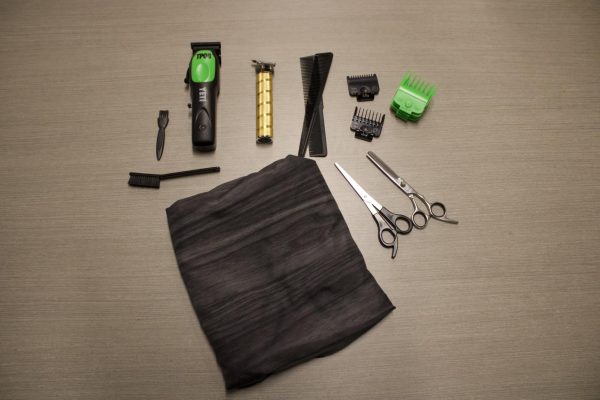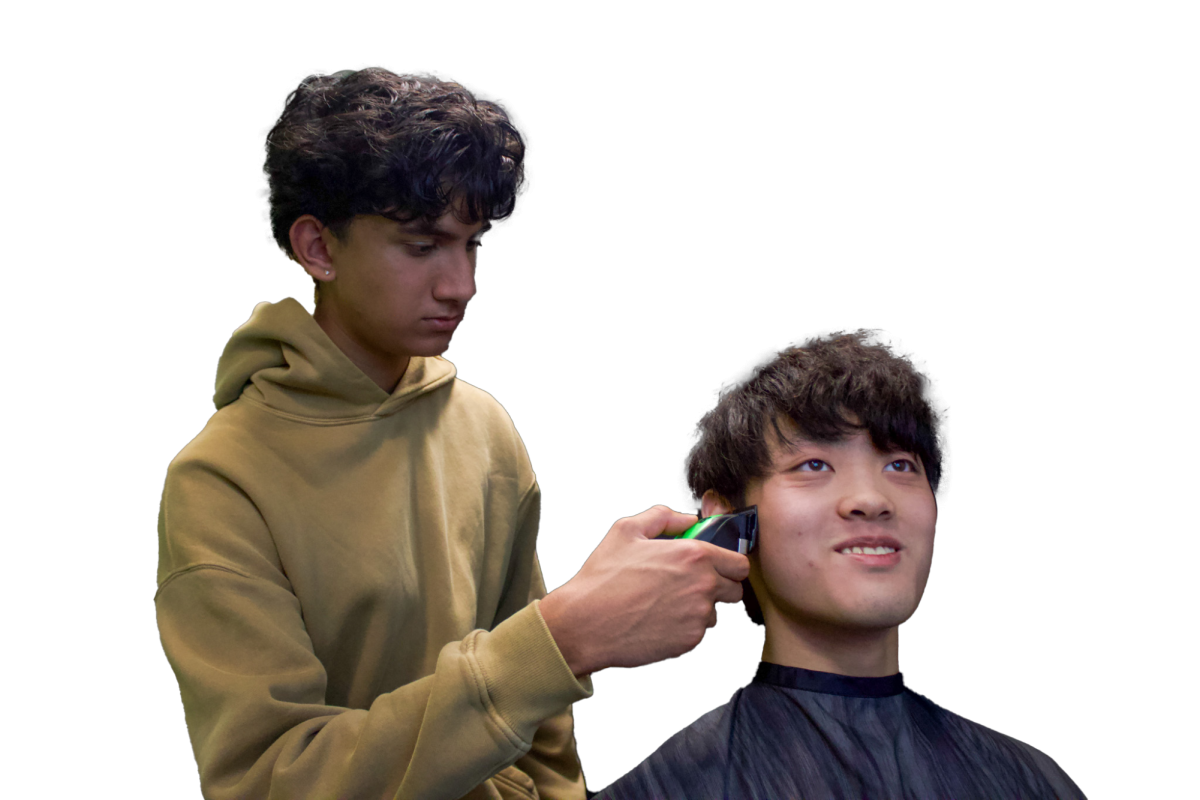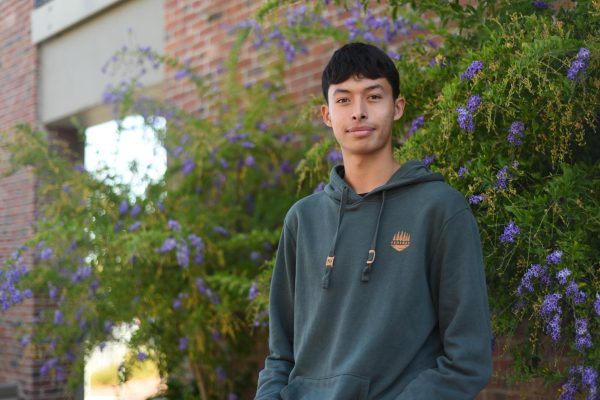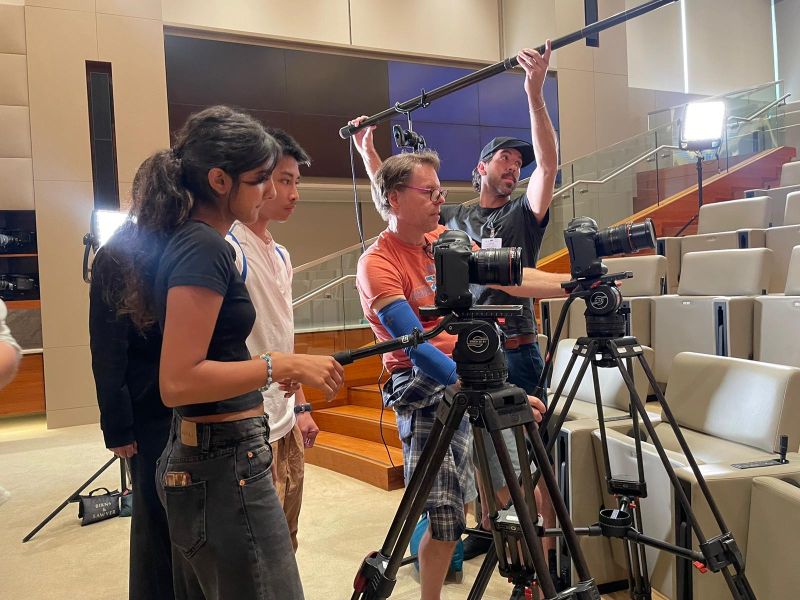Small tufts of hair drift to the ground from a pair of sharp silver scissors working around a client’s head of hair. Senior and student barber Vibhav Pata circles his client and changes tools to a razor to skillfully blend the client’s fade. Once he is done, Pata lifts a mirror for his customer to see, watching him inspect his new haircut. The satisfied smile on the client’s face marks another successful haircut in Pata’s business.
With some encouragement from his friend Advait Ramakrishnan and due to the high prices of professional barbers, senior Vibhav Pata began learning to cut his own hair as a freshman by experimenting on himself, studying his barber’s hair-cutting techniques and learning from his friend, who is also a student barber.

“I had a friend who also cut other people’s hair, and I became friends with them for that reason,” Pata said. “He’s part of the reason I got encouraged to cut hair. My older brother was also encouraging me to do whatever I wanted in high school, so he was also part of the reason I got into cutting hair.”
Sophomore Rohit Ramachandran started cutting hair because he was dissatisfied with professional barbers. Through watching detailed tutorials on YouTube, he learned about where to cut, when to stop and how to use equipment effectively.
“I saw that a lot of my friends were getting haircuts from salons who don’t exactly take the time to give you the best haircut,” Ramachandran said. “They’re more trying to get done with as many haircuts as possible for the day. I thought that if I was able to learn how to cut hair, then at least I could give people the haircut they wanted, like the ones that are in style, and spend more time giving them a quality haircut.”
As Ramachandran continued to improve at hair cutting through practicing on his friends, he began posting short videos of his hair cuts to his Instagram account @cloudscuts. Over time, his Instagram account accrued 109 followers and Ramachandran began receiving messages from people asking to get their hair cut.
“I get so many people telling me, ‘This is the best haircut I have ever gotten,’” Ramachandran said. “That’s partially because most people just go to these regular salons and they’re not up to date about what people want. Currently, the styles people want take a lot of time to achieve, and they just don’t have the time to do that in a salon unless you want to pay $60 for a haircut.”
Sophomore Aidan Ang has gotten his hair cut by Ramachandran five times. Although Ang was initially worried about Ramachandran’s abilities, he grew more confident in Ramachandran over time, especially as he noticed some improvements.
“I didn’t trust him every time,” Ang said. “But even if at the time I felt like I didn’t like it, the next day it turned out to be pretty good. He’s improved a lot. At first, he was bad at blending in the back, but he’s gotten a lot better at that, and he’s always been decent at fading.”

Like Ramachandran, Pata continued to improve over time as he practiced, and he realized that his skill was improving, and his services were in demand, so he decided to start a business by creating an Instagram account Pata Blendz, which now has 133 followers. Soon, Pata was giving two to three haircuts per week and began to notice the effects his haircuts had on his clients.
“The most rewarding part of cutting hair is seeing a smile on my customer’s faces,” Pata said. “When they see that I did a good job, it makes me feel happy because it makes me feel like I’m good at my craft. As a barber, you affect the confidence of your clients for the next couple of weeks, depending on how good your haircut is.”
Both Pata and Ramachandran initially cut their friends’ hair for free but began charging $25 and $15, respectively, as their skills improved. Both barbers initially relied on word-of-mouth to promote their businesses but eventually began posting videos and photos of their haircuts on their Instagram accounts. Even though Ramachandran and Pata say they are commercially successful, they agree that it comes with challenges.

“Being a barber is inconvenient,” Pata said. “I need to clean all my tools and charge them. Then I need to drive to a nearby park. I don’t have a rotating chair for people to sit on. I can’t lower or raise the heights. I don’t have good lighting. There’s a lot of factors that you need to be a barber.”
Both barbers say that they are unlikely to pursue cutting hair professionally in the future. Currently, Pata works as a referee for kids’ basketball in kindergarten through eighth grade and says that he is not likely to return to working as a barber because of its inconvenience. However, Ramachandran says he may continue cutting hair in college.
“I’ve heard a lot of stories about people cutting hair in college and how it’s also necessary for college students who don’t want to pay that much to go to a big salon or don’t have the time to go somewhere,” Ramachandran said. “I want to help the community, and it’s fun for me to cut my friends’ hair. I don’t do it much for the money — I do it to see the smiles on their faces because they like the haircut they got.”












